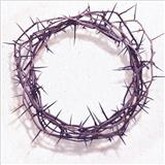
History Unplugged Podcast
Scott RankWhat Egyptian Crocodile Mummies Tell us About Life, Death, and Taxes Thousands of Years Ago
June 10, 2021 ● 55 minShare this episode
This was during a growing Western fascination with ancient Egypt that was later dubbed Egyptomania. Researchers hunted all things Egyptian — especially human mummies, partly because they represented the Western obsession with bringing the dead back to life.
While the team were excavating the town’s cemeteries, they found something unexpected: crocodile mummies. Instead of being thrilled at the discovery, the archaeologists saw the reptilian mummies as getting in the way of what they really wanted. But a new generation of Egyptologists have a different view. They see these crocodiles as a means of understand Egyptians’ views of fear, strength, pleasing their gods, and even death. But those aren’t the only secrets they contain. To hold the mummies’ shape, priests would stuff the mummies with waste papyri that had writing on it that people didn’t have a use for anymore.
This waste papyri, plus other texts that were found in Tebtunis, reveal what daily life was like for the ancient Egyptians. It’s knowledge that’s invaluable to social historians today.
Joining the show to discuss these curiosities are Rita Lucarelli, professor of Egyptology and the faculty curator of Egyptology at the Phoebe A. Hearst Museum of Anthropology, and Andrew Hogan, a postdoctoral fellow at the Center for the Tebtunis Papyri at the Bancroft Library. We discuss all the ways that the most unlikely of items can connect us to the ancient past and understand our predecessors.
See omnystudio.com/listener for privacy information.
Today's Devotional
A Prayer for Hope When the Holidays Trigger Painful Memories - Your Daily Prayer - November 19
The holidays can remind us not only of who or what we've lost but of moments that still sting with disappointment, regret, or sadness.
Top Music Videos

Anne Wilson The Manger’ Anne Wilson And Josh Turner Christmas Hymn

The Statler Brothers 'Til the Storm Passes By' The Statler Brothers Live Performance

CCM Magazine Oak Ridge Boys Singer William Lee Golden Shares How Group Has Navigated Recent Loss and Grief

CCM Magazine Josh Baldwin | 'Thank You Jesus' (acoustic)

Anne Wilson Anne Wilson’s Stunning ‘Rain in the Rearview’ Live Performance Captivates










